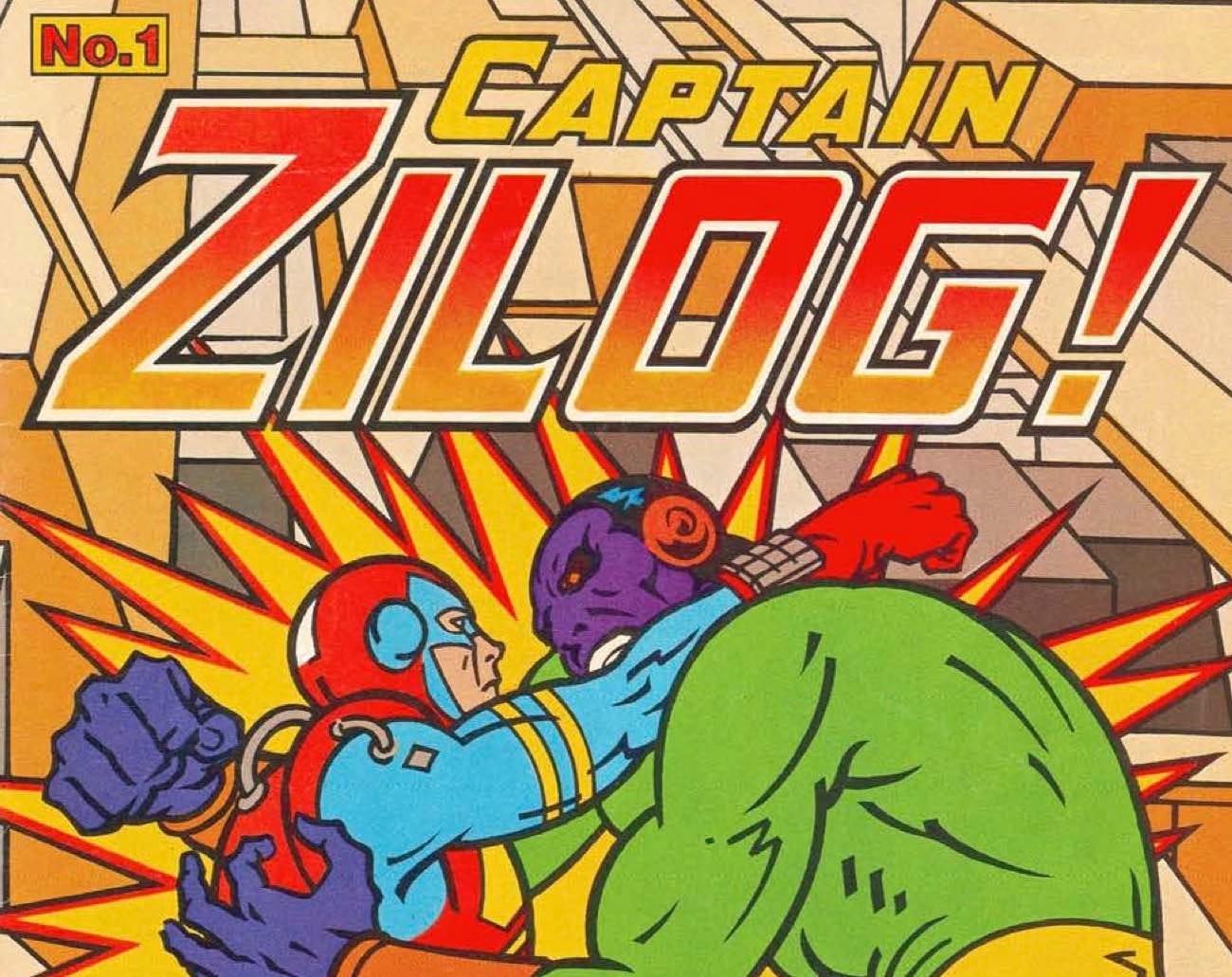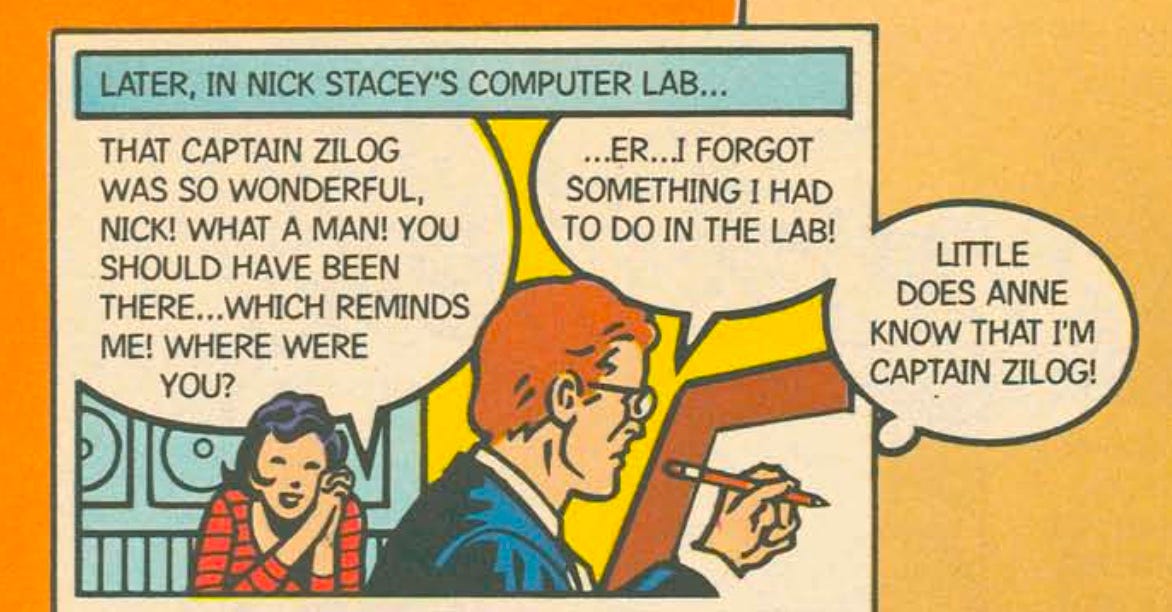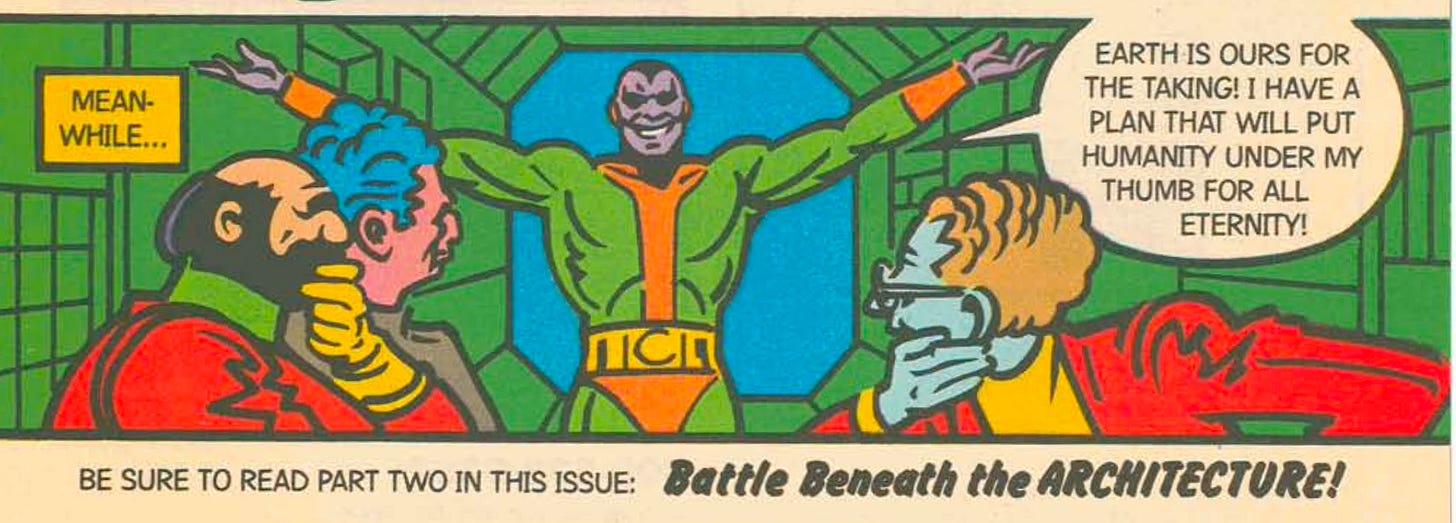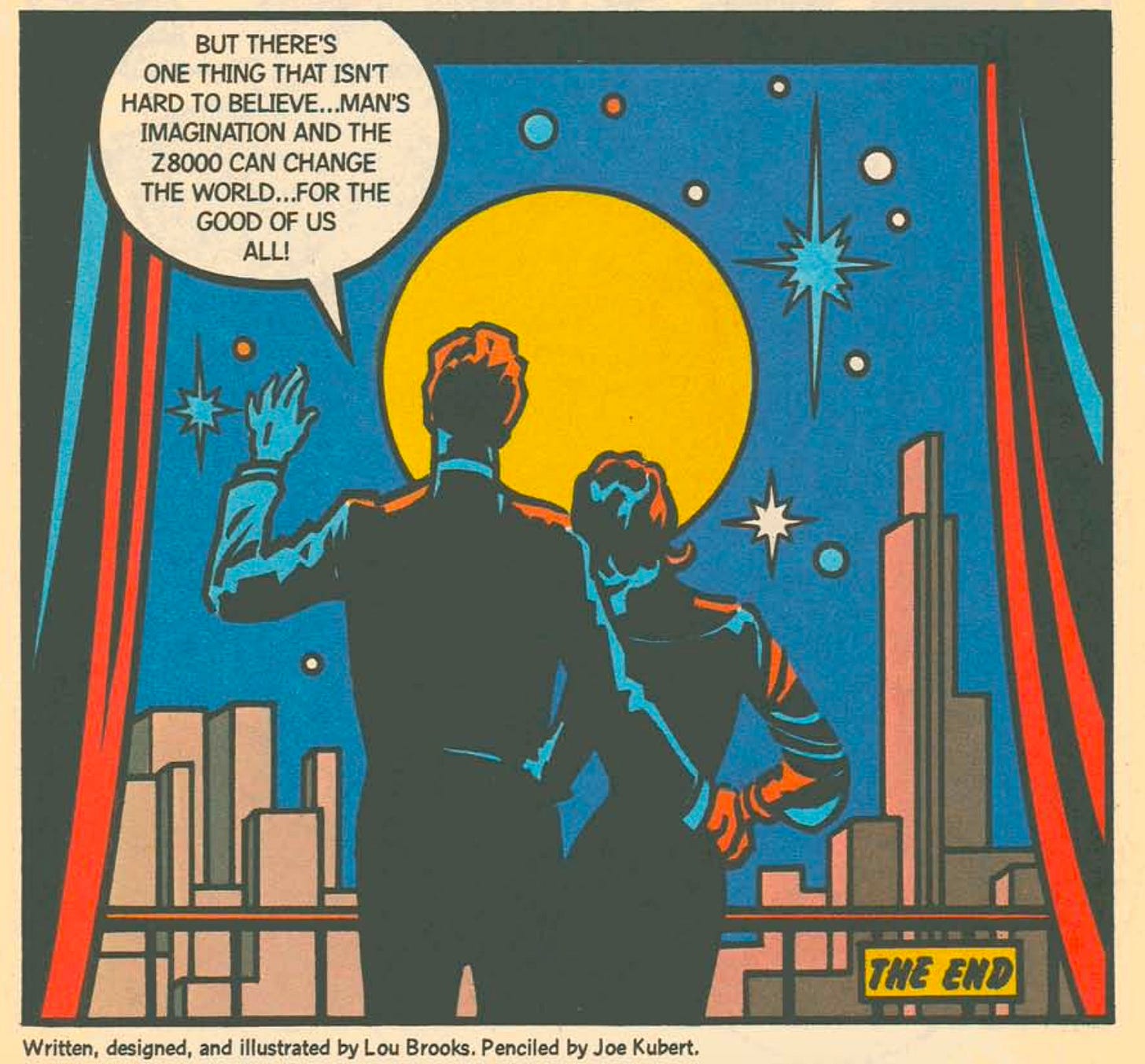Captain Zilog Crushed! : The Story of the Z8000
How Zilog lost the 16-bit microprocessor market
As the 1970s progressed and the first 8-bit personal computers started to become popular, one thing soon became clear. Moore’s law meant that a new generation of more powerful 16-bit microprocessors would soon be needed.
Whoever won the battle of 16-bit architectures would be well-placed to dominate the microprocessor market for this generation and beyond.
In pole position was Zilog. The Zilog Z80 had been one of the leading 8-bit microprocessors, soundly beating Intel’s designs. Its founder, Federico Faggin, had led the development of the first commercial microprocessor and then early 8-bit microprocessors at Intel. Zilog was owned by and supplied with plentiful capital by oil giant Exxon, then one of the world’s most valuable companies. Faggin was also early to recognise the impending transition to the 16-bit microprocessor generation.
Yet Zilog’s 16-bit design, the Zilog Z8000, is a footnote in technology history. It was quickly and comprehensively beaten in the market by both Intel’s 8086 and Motorola’s 68000. This was even though Intel’s 8086 was, by many measures, a design that was markedly inferior to the Z8000.
How could this happen?
In this post, we’re going to look at the story of the Z8000 and examine why it failed. It’s a story that has lessons for us even today.
Federico Faggin and Zilog
The early days of Zilog were a triumph for Federico Faggin. He had built the first commercial microprocessor, the 4004, whilst at Intel. He had then gone on to lead the development of the Intel 8080, the microprocessor that had helped start the personal computer boom.
But he fell out with Intel’s management and left Intel in August 1974. Seeing the opportunity to create a dedicated microprocessor company, he founded Zilog in 1975 with Ralph Ungermann and soon gained significant investment from oil giant Exxon, then looking to diversify into the fast-growing information technology sector.
Zilog’s first product, the Z80, designed to compatible with, but also significantly enhance, the 8080, became a massive success. The Z80 found itself at the heart of a new generation of home and business personal computers. The Tandy TRS-80 and Sinclair ZX Spectrum both used the Z80. Perhaps more importantly, the Z80 powered a wide range of computers running Digital Research’s CP/M operating system which dominated the business computing market.
The Race for 16-Bit
The story of the Z8000 starts early in the history of Zilog.
Even whilst development of the Z80 was underway, Federico Faggin saw that his firm needed to start on development of its 16-bit successor. Masatoshi Shima who had worked with Faggin on the 4004, the 8080 and then had followed him to Zilog was busy at work on the Z80. In any event, the successor would be likely to be radically different to the Z80 and so Zilog needed someone with more extensive experience in the development of more powerful computer architectures.
Faggin recruited Bernard Peuto in March 1976 from Amdahl, the maker of IBM compatible mainframe computers. Peuto was attracted to the opportunity to create his own architecture from scratch, rather than simply build designs based on someone else’s architecture. Peuto had previously performed extensive studies of various aspects of architecture design, with research papers published on instruction length, code density and speed.
Straight away after joining Zilog, he started work on the specification of the Z8000.
Designing the Z8000 architecture
Early on, some crucial decisions were made which would set the course for the design of the Z8000 and would help to determine its fate.
Firstly there was the decision as to how many pins (or electrical connections with the rest of the computer) the new processor would have. This seemingly mundane decision would have a crucial impact on the architecture of the new processor. As Faggin would later say, it became a case of the ’tail wagging the dog’.
After considering and rejecting, on cost grounds, a package with 64 pins, the team decided to go with two options. One cheaper version would fit into a 40-pin package. This version would have its memory address sizes limited to 16-bits and so would only be able to use 64 KB of memory. A more expensive 48-pin version would have access to a 23-bit or 8 MB address space.
To support this approach, the architecture would be based on segmented addresses. Any memory address would be made up of two components – a 16-bit ‘within segment’ address and an address for the start of the segment – which would be added together to generate the full address.
The 40 pin version, known as the Z8002, would only operate within a single 64 KB segment. The 48 pin version known as the Z8001 would have access to up to 128 distinct segments of up to 64KB.
There was a catch though. The Z8001 would need an additional chip, known as a memory management chip (or MMU), to fully implement this segmented approach. The Z8001’s MMU, known as the Z8010, would add additional cost and complexity to the implementation of more powerful Z8000 based systems.
Segmented memory also made things more difficult for some types of software. Moving from 8-bit systems was straightforward. In fact, Zilog built software that would allow developers to automatically translate their Z80 assembly language code into a version that would run on the Z8000. However, some emerging classes of computers and applications, particularly those that included Graphical User Interfaces, would need access to larger continuous blocks of memory than was possible with a design with 64 KB segments.
If developing the Z8000’s specification was difficult, then it wasn’t helped by the relationship between Peuto and Shima. It would be Shima who would implement the architecture, and so it was crucial that they worked closely together on the specification of the design. According to Faggin:
“The two were supposed to work closely together, but Shima was even more opinionated than Bernard and every time they met they seemed to clash.”
This was not a recipe for speedy completion of the design.
Shima Gets to Work
Eventually, the specification was finished and Shima set to work on implementing the new design.
One key implementation decision was that the Z8000 would not make use of microcode. Microcode would have broken down the Z8000’s instructions into a series of simpler instructions, hidden from the outside world, which the processor would execute. Instead, all instructions would be ‘hard-wired’ into the logic of the CPU, a more challenging approach for the designer. Shima would later discuss how much more difficult the Z8000 was to create when compared to the Z80, and how it tested the limits of the tools that he had available:
“… there are so many instructions in Z8000 it is impossible to store all of test vector for debugging in the memory of test bench anymore. Also, MOS process was getting denser and denser and also the size of the defects in masks was getting smaller. That is it was not so easy to find the fully functional die.”
The benefit of this approach was that the Z8000 needed fewer transistors than would have been the case had it used microcode. This meant that it should have been cheaper to produce. In theory, it also should have given the Z8000 performance gains over a microcoded competitor.
The additional complexity of this approach, though, delayed the Z8000’s completion. It would take Shima about two years to complete the designs of the Z8001 and Z8002.
Intel’s Entrant
Shima was still working on the implementation of the Z8000 in June 1978 when Intel released the 8086, its first 16-bit microprocessor. Faggin immediately knew that he had missed one of his key targets, to be first to market with a 16-bit microprocessor. Zilog now had to play catch-up.
In many ways, the 8086 was similar to the Z8000. It was designed with a segmented memory architecture and would permit automated translation of 8080 assembly code into instructions that could be used by the 8086.
There were some key contrasts with the Z8000, though. Intel had gone for a less ambitious architecture, one that looked like an upgrade on their 8-bit 8080 rather than a fresh approach. The Z8000 had sixteen 16-bit ‘general-purpose’ registers and by comparison the 8086 had a much smaller set of registers and provided much less flexibility in how they were used. The 8086 was also limited to 1 MB of memory, in contrast to the 8 MB of the Z8000.
Intel had also decided on an implementation that used microcode. The 8086 needed more transistors (more than 50% more than the Z8000) for a less impressive design.
But Intel’s superior manufacturing enabled it to compete even with this penalty. And the microcoded design helped to enable Intel to get the 8086 to market first. It had taken only a little more than 2 years from the inception of the 8086 to it going on sale in June 1978.
The first working silicon of the Z8000 CPUs only became available in early 1979, over six months after the 8086.
And the Z8010 Memory Management Unit wasn’t available until even later. It would take almost a year after shipping the Z8000 CPUs for this crucial component to ship. Until then, customers either had to make do with either a 64 KB system, or to improvise memory management using their own ‘discrete logic’ designs which would be both pricier and provide fewer features.
By contrast, they could buy the 8086 which included the functionality to address 1 MB in a single chip. Intel now had an 18-month lead for most practical purposes.
Captain Zilog
But all was not yet lost. Zilog was backed by the resources of Exxon started to market the Z8000 with the help of a ‘Super Hero’.
They created a series of comic books showcasing the capabilities of the new design. The character called ‘Captain Zilog’ led the way in showing off the Z8000. Captain Zilog battles ‘Diabolicus’ who controls the ‘largest and most complex computers in the universe’ (and also apparently has ‘a little mail order computer repair school on the side in Santa Clara’ – presumably an in-joke that has been lost in the passage of time) but is no match for Captain Zilog and his Z8000.
Here is a sample of some of the dialog, which gives a sense of how the merits of the Z8000 were being marketed:
THE Z8000 HAS A REGULAR ARCHlTECTURE! THAT BIG COMPUTER DESIGN FEATURE AVOIDS THE BOTTLENECKS INHERENT I N TRADITIONAL MICROPROCESSOR DESIGNS!
WlTH 418 OP CODES, THE Z8000 PERMITS COMPACT PROGRAMS! THROUGH-PUT RIVALS THAT OF LARGE COMPUTERS!
THERE’S 32-BIT OPERATION CAPABILITY BUILT INTO THE Z8000 THAT INCLUDES MULTIPLY AND DIVIDE!
Captain Zilog got the Z8000 noticed, but would it be enough to take back the advantage from Intel?
Motorola and Crush
In September 1979, Motorola announced the 68000. The Motorola team, sensing that that they would lose if they launched with a design that was close to Intel’s, aimed to leap ahead with a much more advanced design.
Crucially, unlike the 8086 and the Z8000, the 68000 avoided a segmented memory architecture so that it offered a continuous memory space of up to 16 MB, a key advantage for users looking to implement more complex or demanding applications.
Intel had to respond. Recognising that the 8086’s architecture was weak when compared to its competitors, Intel focused on its strengths: in particular the range of peripheral chips that were available for the 8086, which far outnumbered the range available for the Z8000 or the 68000. Quoting Intel’s Bill Davidow the 8086:
“It turned out that we only had one option that was to sell at a system level because we were worse at the component level, but we had all of these other things going. I remember thinking to myself, if we can position ourselves around the fact that this is the most important technical decision the corporation we are selling to will make for the next decade, we can talk to people at a very, very high level, and talk to them about the amount of engineering time involved, how total system cost will be less because we will have all these peripherals, how you'll be able to write your software faster, we could focus the selling processes in our favor.”
The project to sell the 8086 became known as ‘Operation Crush’. It was accompanied by a marketing campaign, designed by Regis McKenna – who would also work with Steve Jobs at Apple – in which Intel spent over $2 million.
Crush worked. Intel set a target of 2,000 design wins, and it eventually achieved well over that number. For systems that needed the most processing power, the Motorola 68000, with its non-segmented architecture, was very attractive, but for other systems the 8086 won. Zilog had an early win with Olivetti for a desktop computer system, the M20, but there was little else of note.
In 1979, the 8086 was joined by the 8088, which replaced the 8086’s 16-bit data bus with an 8-bit one. The 8088 was slower than the 8086, but it was even cheaper to use.
And then in 1980 IBM chose the 8088 for the IBM PC. Moreover, the IBM PC was an open system – made from components and running software designed by other firms – so that others could build close or (eventually) fully compatible versions.
Faggin would later say that he believed that IBM selected Intel rather than Zilog because of Exxon’s ownership of Zilog. Exxon had ambitions to be a major IBM competitor in ‘Information Technology’ and Zilog was a key part of that ambition. Selecting the Z8000 would have meant relying on a powerful up-and-coming competitor.
It was game over for the Z8000. Captain Zilog had been ‘Crushed’.
Shima returned to Japan at the beginning of 1980, fulfilling a promise to his wife that their children would be educated in Japan. Faggin left Zilog at the end of 1980. Zilog would never challenge Intel in the microprocessor market again.
Why Was Captain Zilog Defeated?
So why did Zilog fail when, in many respects, it had a competitive and arguably better product than Intel? Zilog was owned by Exxon, who was both ambitious and also happy to shower large amounts of cash on its promising subsidiary.
These might seem to be advantages, but they came with significant drawbacks. Zilog was encouraged by its parent to do more than might be reasonable for a startup of its size. So whilst the cash was available to support development, the resources within Zilog were spread thin.
Then there was the Z8000 itself. It fell between two stools. It wasn’t the cheapest, nor did it have the most advanced architecture. It was destined to be second choice in any contest.
Furthermore, it’s also arguable that the Z8000 was focused on the wrong goals. Code size was a key target, but the additional memory that was available with 16-bit systems made this less important.
Zilog kept the cost of the Z8000 itself down using fewer pins, memory segmentation and avoiding microcode, but the CPU itself would be a small part of the cost of a complete system. The additional MMU chip increased costs. And memory segmentation meant that the Z8000 would lose out against the Motorola 68000 when it came to choosing a CPU for more powerful Graphical Systems such as Apple’s Lisa and Macintosh.
And then there was Crush and IBM. Intel’s marketing campaign was hugely successful because it focused on the issues that mattered to potential customers and sold a complete solution. Zilog had, for a long time, had a weaker and incomplete offering.
Did Zilog have it too easy with the Z80? Bernard Peuto would say that the Z80 had sold itself. Intel had struggled with the 8080’s successor and knew that they had to focus on making the 8086 a success.
So it was probably game over for the Z8000, even before IBM selected Intel’s 8088.
Zilog had made extraordinary progress in the few short years after its founding. Quoting Federico Faggin:
“… I think actually that for five years Zilog set the pace for the industry. Zilog was for its first five years of life, maybe four you can argue, the pacesetter in the industry, what Intel later became.”
But in the end, even Captain Zilog couldn’t defeat Big Blue.
Supplemental Post
For more commentary on the story of the Z8000, notes on sources, analysis of the Z8000’s architecture, and how the Z8000 lives on today then please become a paid subscriber.








Bernard Peuto donated his personal papers to the Computer History Museum shortly before he died (lot X8585.2018). They included his engineering notebooks from Zilog, and cassette recordings of a number of meetings discussing things like support for higher level languages. I organized the materials for the donation.
Great writing!